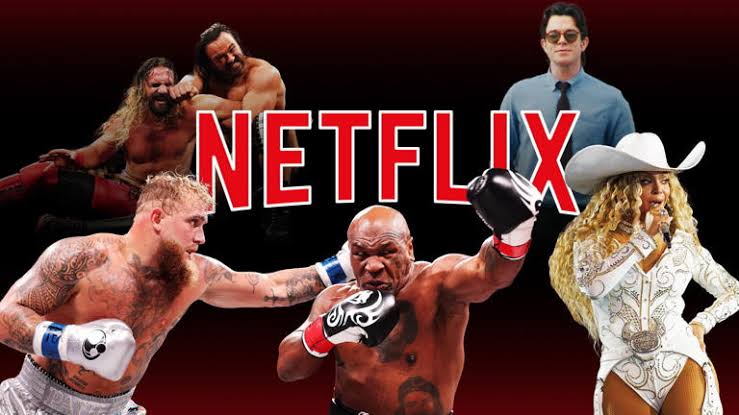
Netflix’s Strategic Expansion: Embracing Live Sports and Interactive Content
In recent years, Netflix has strategically diversified its content offerings, venturing into live sports broadcasting and interactive programming to enhance viewer engagement and attract a broader audience.

Foray into Live Sports Broadcasting
In December 2024, Netflix marked its entry into live sports by securing the rights to air NFL games on Christmas Day. The streaming giant paid $150 million for the rights to broadcast two games featuring teams like the Kansas City Chiefs, Pittsburgh Steelers, Baltimore Ravens, and Houston Texans. This move not only expanded Netflix’s content portfolio but also demonstrated its commitment to competing with traditional sports broadcasters during major events.
This initiative was part of a broader strategy to reduce subscriber churn and boost advertising revenue. By investing in live sports, Netflix aimed to offer unique content that could differentiate it from competitors and attract subscribers interested in live event programming.

Development and Shift in Interactive Programming
Netflix’s exploration of interactive content began with children’s programming, starting in 2017 with titles like “Puss in Book.” The platform’s first adult-oriented interactive experience, “Black Mirror: Bandersnatch,” was released in 2018, allowing viewers to make choices that influenced the narrative’s direction. This innovation garnered attention for its novel approach to storytelling.
However, by November 2024, Netflix announced plans to remove most of its interactive programs, citing technological limitations and a shift in focus towards other content formats. “Black Mirror: Bandersnatch” remained available, but the move indicated a strategic pivot away from interactive content.
Financial Strategies: Subscription Pricing and Ad-Supported Tiers
To balance content investments and profitability, Netflix adjusted its subscription pricing and introduced ad-supported tiers. In January 2025, the company announced a price increase for its subscription plans in the U.S., with hikes ranging from $1 to $2.50 per month, depending on the plan. This adjustment aimed to generate additional revenue to support the platform’s expanding content library and technological advancements.
Additionally, in July 2022, Netflix introduced an advertising-supported subscription option, providing a lower-cost alternative for subscribers willing to tolerate ads. This tiered approach allowed Netflix to cater to a wider audience while exploring new revenue streams.
Challenges and Criticisms
Despite its innovations, Netflix faced challenges in content reception and public perception. The platform’s interactive programming, while initially lauded, received criticism over time.

Concerns were raised about data collection practices during interactive experiences, with reports indicating that Netflix recorded user choices without explicit consent, leading to privacy debates. These issues highlighted the complexities of balancing innovative content with user privacy and consent.
Conclusion
Netflix’s ventures into live sports broadcasting and interactive content reflect its ongoing efforts to innovate and adapt in a competitive streaming landscape. While these initiatives have expanded its content offerings and attracted diverse audiences, they also underscore the challenges of navigating technological limitations, user privacy concerns, and market competition. As Netflix continues to evolve, its ability to balance innovation with user trust and profitability will be crucial to its sustained success.





